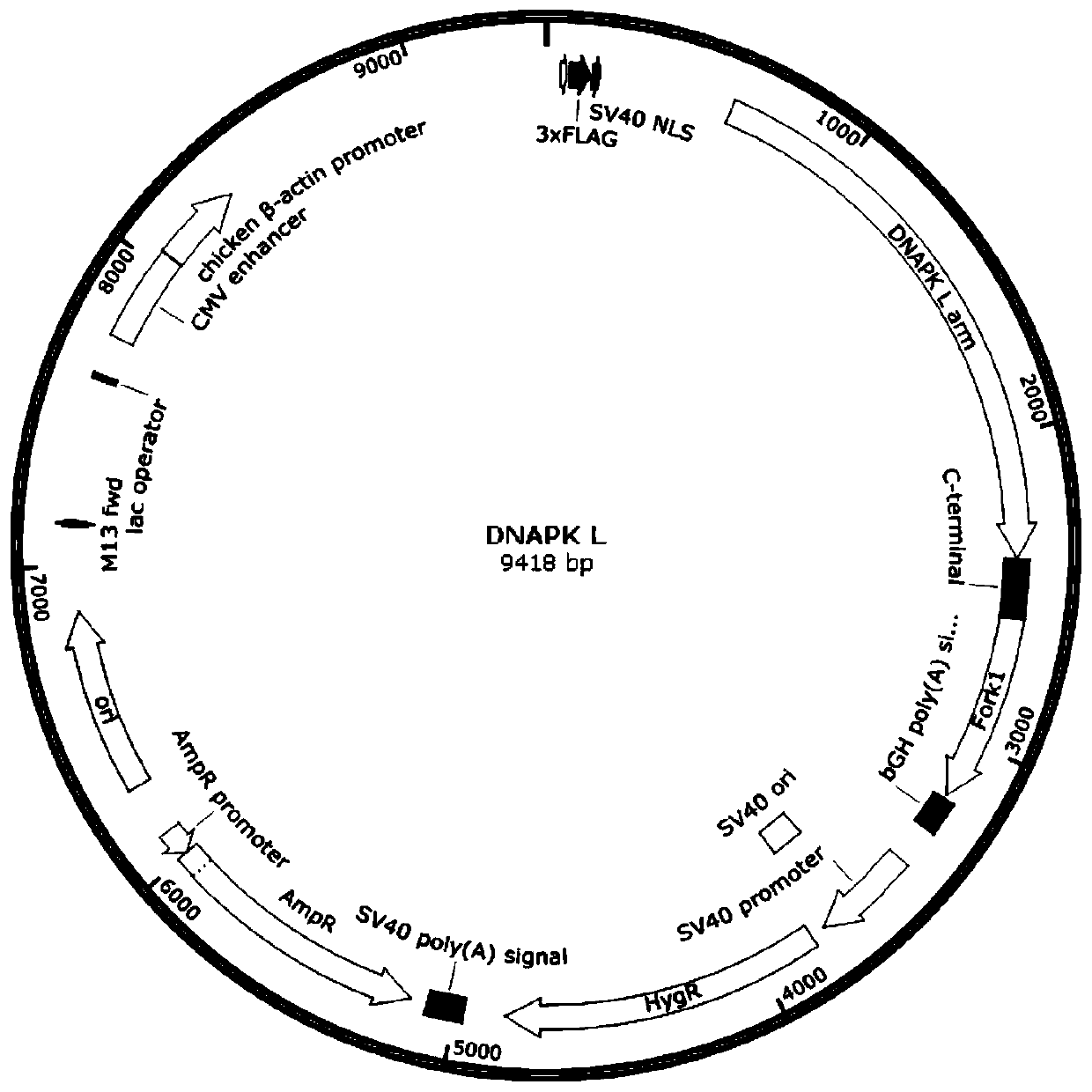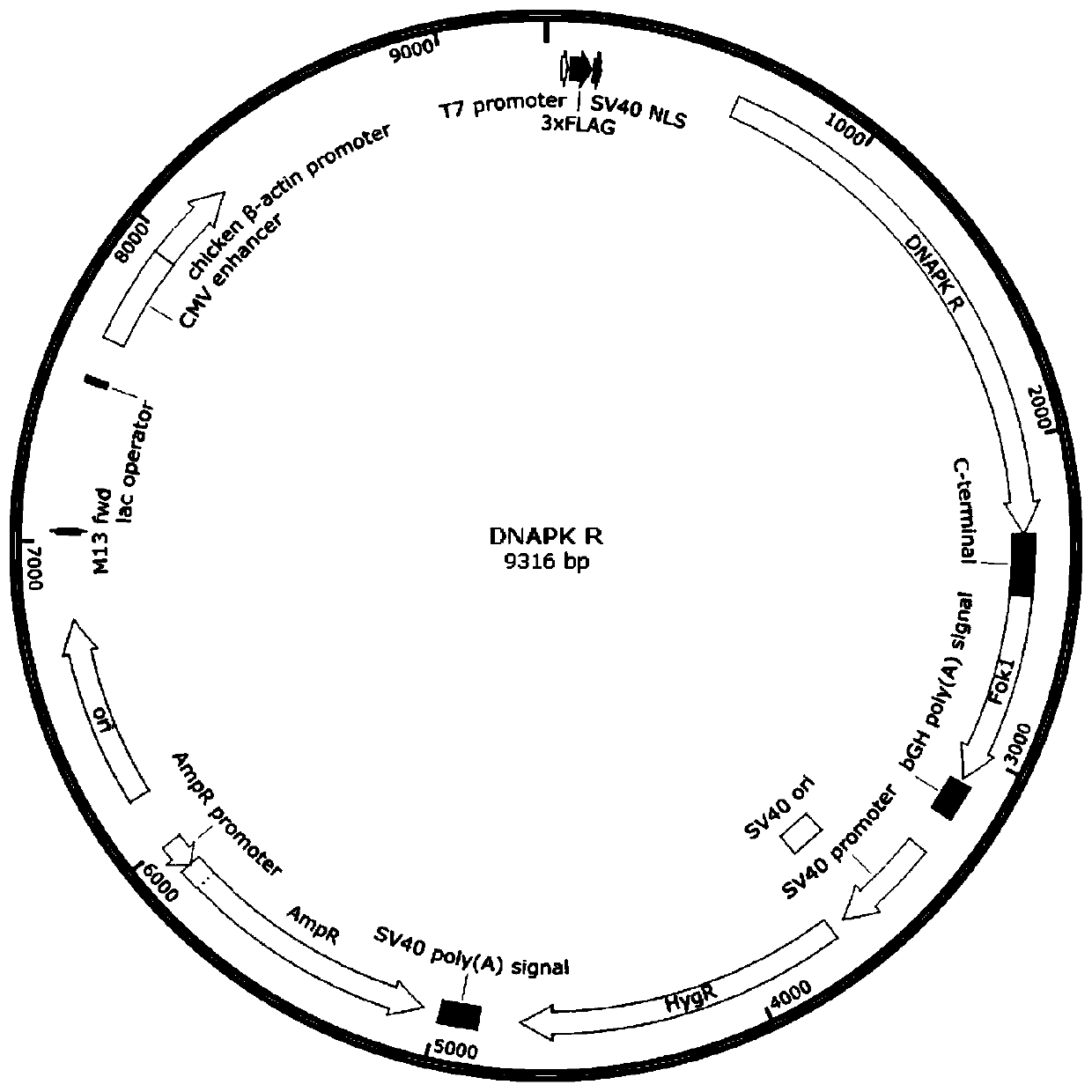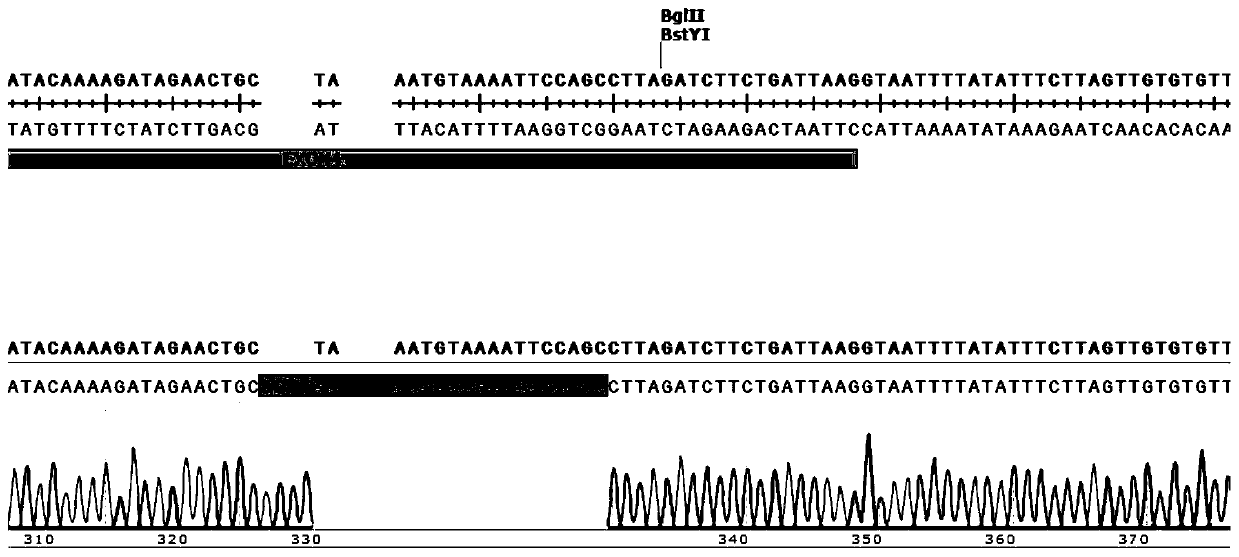Construction method and application of plasmid composition, dnapk gene knockout rat model
A technology for constructing methods and compositions, applied in recombinant DNA technology, biochemical equipment and methods, genetic engineering, etc., can solve the problems of easy spontaneous tumor formation, low serum insulin content, and large limitations, and improve the success of model preparation. efficiency, simplifying preparation and screening processes
- Summary
- Abstract
- Description
- Claims
- Application Information
AI Technical Summary
Problems solved by technology
Method used
Image
Examples
Embodiment 1
[0065] Example 1 Design of rat DNAPK gene-specific TALEN sequence and construction of recognition module
[0066] 1) Screening of TALEN target sites
[0067] According to the sequence characteristics of the SD rat DNAPK gene, the sequence on the fourth exon was selected as the target sequence recognized by TALEN, and the nucleotide sequence of the fourth exon of the rat gene is shown in SEQ ID NO:1. In this experiment, the nucleotide sequence with the structure T(Nn)A is used as the TALEN recognition target sequence, where N is any base in A, G, T and C, and n is any number between 13 and 21 .
[0068] In SEQ ID NO:1, select a part of the sequence, such as the sequence shown in SEQ ID NO:2 as the upstream target sequence (sequence L) recognized by TALEN, and select the sequence shown in SEQ ID NO:3 as TALEN recognition The downstream target sequence (sequence R). In addition, there is a sequence gap shown in SEQ ID NO:4 between SEQ ID NO:2 and 3. That is, the target sequ...
Embodiment 2
[0071] Example 2 Microinjection and Embryo Transfer
[0072] The pronuclear fertilized eggs of SD rats were taken, and the in vitro transcription products of the premixed vector 1 and vector 2 plasmids were injected into the cytoplasm or nucleus of the rat fertilized eggs using a microinjector. Refer to the method in the "Mouse Embryo Operation Experimental Manual (Third Edition)" for microinjection of fertilized eggs. After injection, the fertilized eggs are transferred to the culture medium for short-term culture, and then transplanted to the oviduct of the recipient mother mouse to produce genes. knockout rats.
[0073] In vitro transcription process: first use the Ambion in vitro transcription kit (mMESSAGEm MACHINE T7Kit, purchased from Thermo Fisher, product number: AM1344) to transcribe into mRNA, and then use the Ambion tailing kit (poly(A)tailing kit, purchased from Thermo Fisher, product number: AM1350) added a tail to the 3' end of the mRNA sequence, and the oper...
Embodiment 3
[0074] Example 3 Identification of knockout rats
[0075] 1. Genotype identification
[0076] Apply the immunodeficiency rat that the method of the present invention obtains, utilize DNA sequencing technology to check whether the DNAPK gene target sequence in the somatic cells of the immunodeficiency rat is successfully knocked out, and the sequencing analysis result is as follows: image 3 . From the sequencing results, it can be seen that the selected DNAPK gene target site has mutations, including 18 base deletions and 4 base insertions. The loss of the function of the DNAPK gene in rats is caused by the frameshift mutation caused by the fragment deletion and base insertion of the DNA sequence. The sequence of the successfully mutated DNAPK gene is compared with the wild-type rat sequence in Table 1.
[0077] Table 1 Comparison of target sequences between DNAPK knockout rats and wild-type rats
[0078]
[0079] Note: WT is a wild-type SD rat, △18 is a deletion of 18 ...
PUM
 Login to View More
Login to View More Abstract
Description
Claims
Application Information
 Login to View More
Login to View More - R&D
- Intellectual Property
- Life Sciences
- Materials
- Tech Scout
- Unparalleled Data Quality
- Higher Quality Content
- 60% Fewer Hallucinations
Browse by: Latest US Patents, China's latest patents, Technical Efficacy Thesaurus, Application Domain, Technology Topic, Popular Technical Reports.
© 2025 PatSnap. All rights reserved.Legal|Privacy policy|Modern Slavery Act Transparency Statement|Sitemap|About US| Contact US: help@patsnap.com



